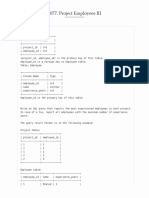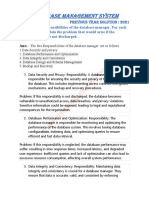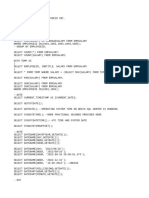0% found this document useful (0 votes)
231 views23 pagesTarget Data Analyst SQL Interview Questions 1737945171
The document outlines SQL interview questions for data analysts, focusing on tasks such as identifying top products by sales increase, calculating out-of-stock percentages, finding products with inconsistent sales, tracking customer retention, and explaining indexing in SQL. It provides detailed SQL commands and explanations for each task, including creating tables, inserting sample data, and writing queries. Additionally, it discusses how to optimize queries using indexing techniques for better performance on large datasets.
Uploaded by
sravan kumarCopyright
© © All Rights Reserved
We take content rights seriously. If you suspect this is your content, claim it here.
Available Formats
Download as PDF, TXT or read online on Scribd
0% found this document useful (0 votes)
231 views23 pagesTarget Data Analyst SQL Interview Questions 1737945171
The document outlines SQL interview questions for data analysts, focusing on tasks such as identifying top products by sales increase, calculating out-of-stock percentages, finding products with inconsistent sales, tracking customer retention, and explaining indexing in SQL. It provides detailed SQL commands and explanations for each task, including creating tables, inserting sample data, and writing queries. Additionally, it discusses how to optimize queries using indexing techniques for better performance on large datasets.
Uploaded by
sravan kumarCopyright
© © All Rights Reserved
We take content rights seriously. If you suspect this is your content, claim it here.
Available Formats
Download as PDF, TXT or read online on Scribd
/ 23



























































































